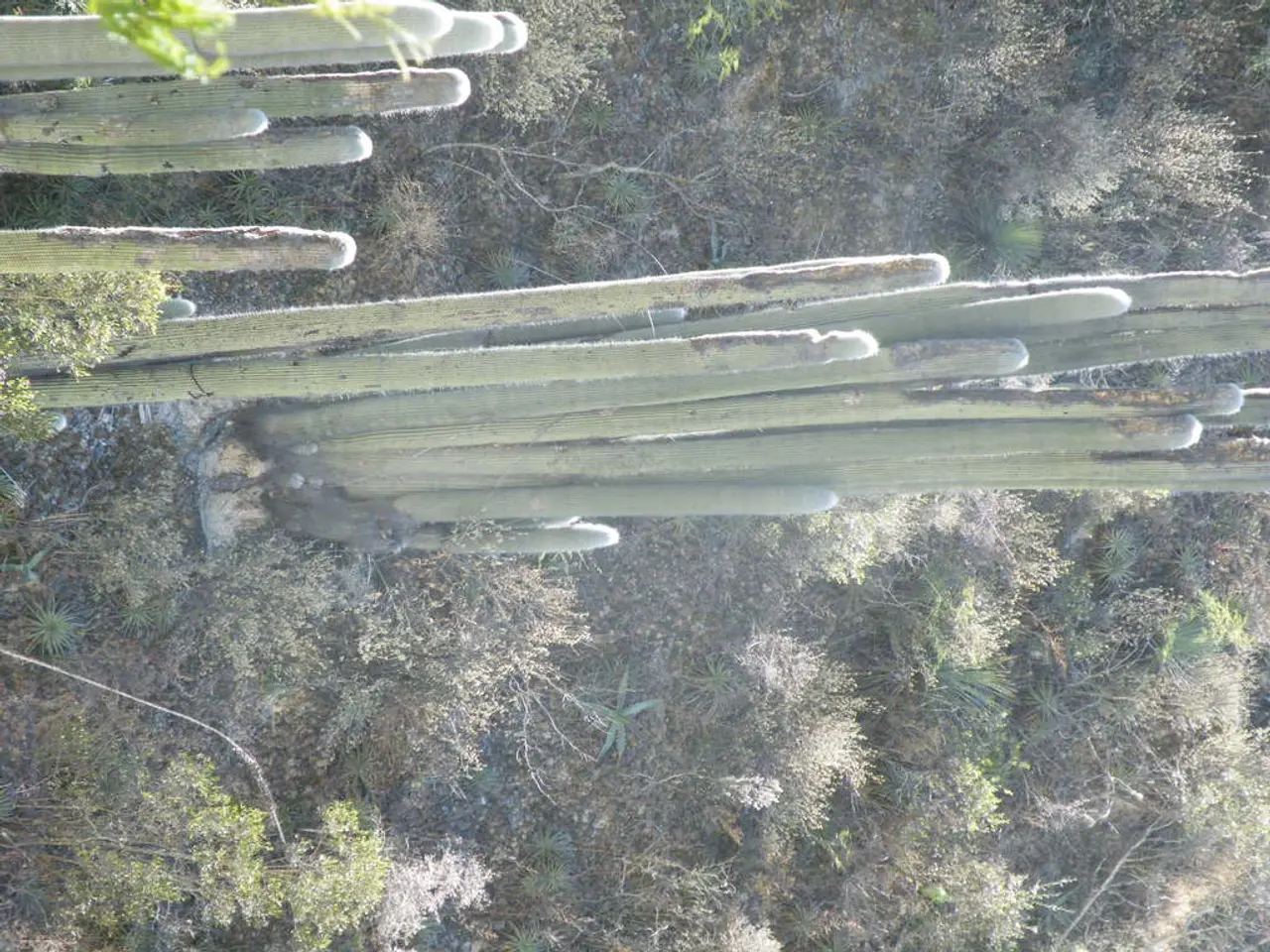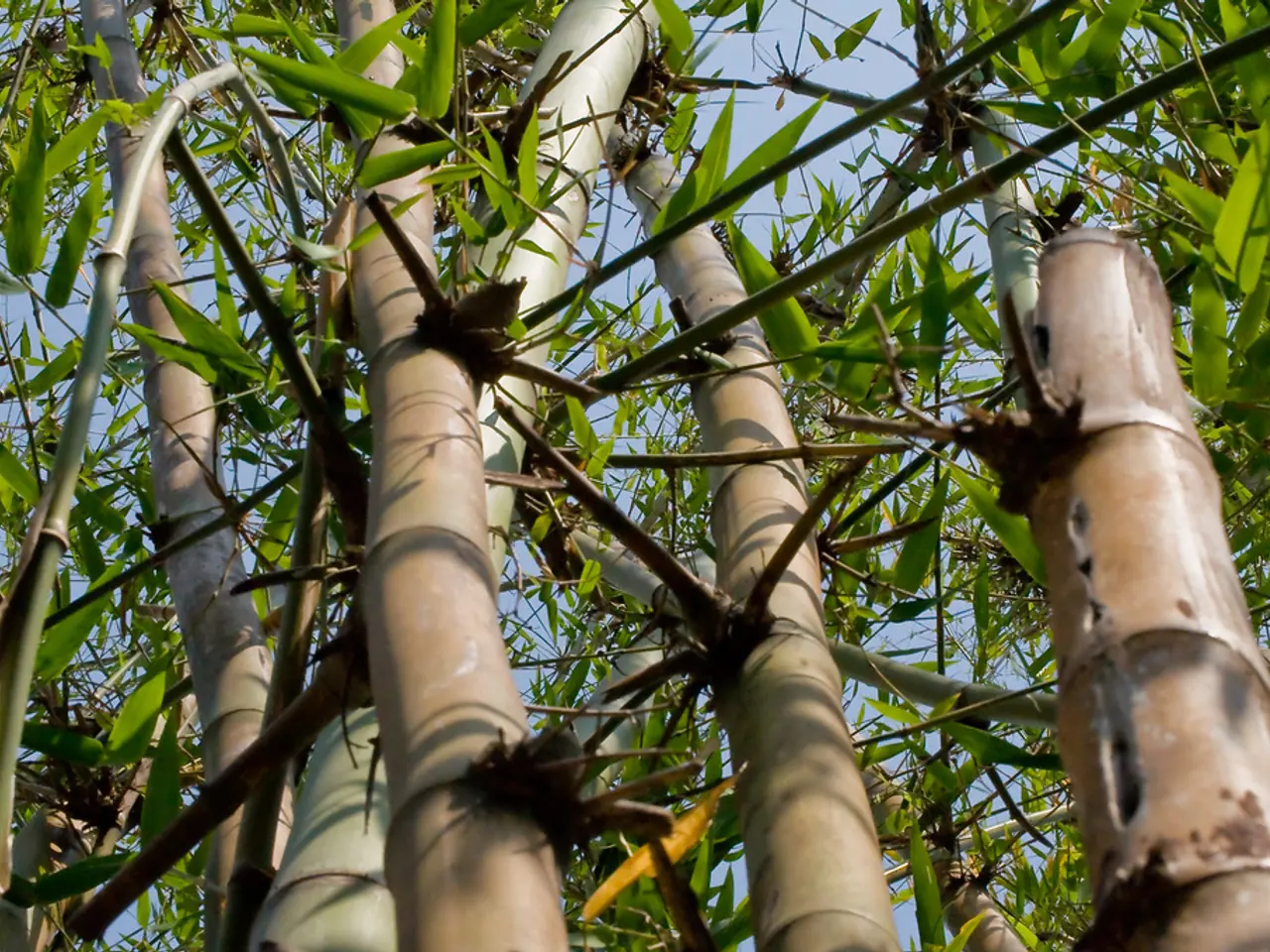Adversity in Arid Grounds: Desert Flora's Resilience in Overcoming Challenging Conditions
In the vast, barren landscapes of the desert, growing non-native plants can be a challenge due to the lack of organic matter and poor soil drainage. This article provides tips for improving desert soil to create an ideal environment for desert plants.
To enhance soil drainage, it's essential to amend the soil with materials like sand, lava rock, or perlite to increase drainage and reduce water retention. These amendments create air spaces in the soil, allowing water to flow through more easily. When planting in containers, use well-draining potting mixes specifically formulated for cacti and succulents to prevent waterlogging.
Avoid planting desert plants in low-lying areas or spots that collect standing water after rain, as these conditions keep the soil too moist for desert species. Incorporating organic matter such as compost or mulch moderately can improve soil structure and nutrient content while maintaining good drainage. This helps sandy desert soils retain some moisture without becoming soggy.
Employ drip irrigation to provide water efficiently and avoid overwatering, which can saturate fast-draining sandy soils and lead to root rot. Test your soil for drainage, pH, and fertility before planting to better tailor amendments and plant choices, since desert plants often prefer alkaline, sandy, low-fertility soils with quick drainage.
Caliche, a layer of calcium carbonate in some desert soils, acts as a barrier to plant roots and impedes water drainage. To address this, it's essential to test your soil to determine its pH level and nutrient composition to choose plants that will thrive in those conditions and adjust the soil if needed.
For healthy vegetable gardens in the desert, it's crucial to ensure proper soil drainage to prevent waterlogging. Tips for improving soil drainage include using raised beds, incorporating organic matter, using mulch, and planting in containers.
Cacti and desert plants generally do well in poor nutrient conditions but still require some nutrients for optimal growth. It is recommended to use cactus-specific fertilizers sparingly and dilute them to avoid overfeeding. Organic matter improves soil structure, moisture retention, and nutrient availability. Peat moss and compost are excellent choices to amend the soil and provide essential nutrients.
Desert plants are adapted to harsh growing conditions, including hot temperatures, scarce water, and lean, rocky soil. They require at least six hours of direct sunlight each day and sandy, crumbly soil even when wet. Hardy shrubs and grasses such as mesquite, creosote bushes, dropseeds, three awns, burrow grass, Joshua trees, yucca, desert orchids, and little bluestem also thrive in arid conditions.
If you live in a high-humidity area, ensure they have room to dry out to prevent fungal issues. Desert plants, while adapted to drought conditions, still require supplemental irrigation, especially during the establishment phase. Deep and less frequent waterings promote deeper root growth, which benefits the plant during prolonged dry periods.
In conclusion, improving desert soil involves loosening heavy or compacted soils with coarse materials, avoiding wet spots, balancing organic matter, and managing watering carefully to suit desert plant needs. By following these tips, gardeners can create a thriving oasis in the heart of the desert.
To further enhance the growth of cacti and desert plants, it's recommended to use cactus-specific potting mixes when planting in containers, as they are designed for proper drainage and moisture retention. In addition, adding peat moss and compost to home-and-garden soils can help improve environmental-science factors such as soil structure, moisture retention, and nutrient availability, benefiting both the science and lifestyle aspects of home-and-garden cultivation in desert landscapes.




